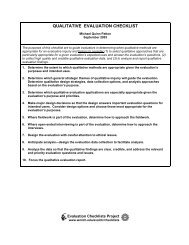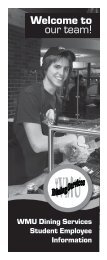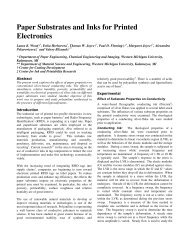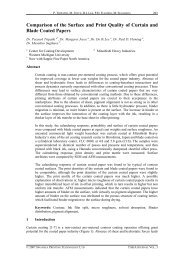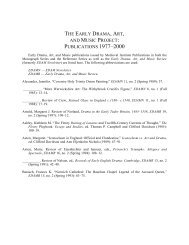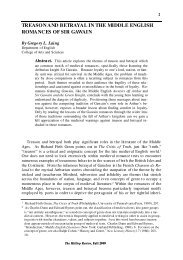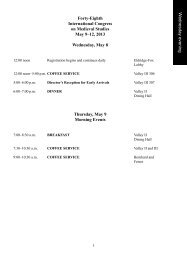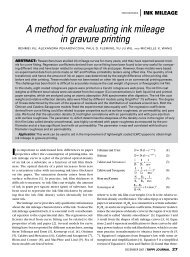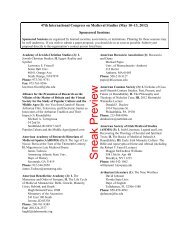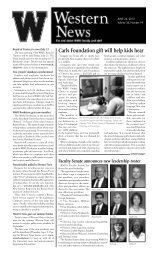Career Development Guide - Western Michigan University
Career Development Guide - Western Michigan University
Career Development Guide - Western Michigan University
Create successful ePaper yourself
Turn your PDF publications into a flip-book with our unique Google optimized e-Paper software.
COVER LETTERS<br />
40<br />
Cover Letter <strong>Guide</strong>lines<br />
The cover letter is an important part of the first impression you create for a prospective employer. It paints a<br />
picture of who you are and what you can offer a company. While a cover letter may not always be required, it is<br />
a great way to explain to an employer why you are a good fit for the position.<br />
Introductory Paragraph<br />
� Identify yourself.<br />
� Clearly state why you are<br />
writing.<br />
� State how you learned of the<br />
organization and job opening.<br />
� Express your interest in the<br />
organization and job.<br />
� Identify any connection(s) you<br />
have with the organization.<br />
� Demonstrate that you have<br />
researched the organization.<br />
� Wording is creative and<br />
catches an employer’s<br />
attention quickly.<br />
Cover Letter Content<br />
Middle Paragraph(s)<br />
(1-2 paragraphs)<br />
� Expand on the information in<br />
your resume.<br />
� Identify one or two of your<br />
strongest qualifications and<br />
clearly explain how these skills<br />
apply to the job.<br />
� Refer to the job description, if<br />
applying to a specific position.<br />
� Demonstrate that you have<br />
researched the organization.<br />
� Explain how you are a good fit<br />
for the position and/or<br />
organization (possibly start a<br />
second paragraph).<br />
Helpful Hints<br />
Concluding Paragraph<br />
� Re-emphasize your interest in<br />
the position.<br />
� Express your interest in an<br />
interview.<br />
� State that you will follow-up<br />
with a phone call.<br />
� Thank the reader for their time.<br />
� Customize each cover letter to the position you are applying for by analyzing the job description and<br />
highlighting the experiences, skills, and education that the employer is seeking in an ideal candidate.<br />
� Align your skills and experience with the position requirements in the cover letter.<br />
� Demonstrate company and industry knowledge.<br />
� Address your cover letter to a specific person. Take the time to figure out who this person is and their title.<br />
� If you cannot find the contact information, address your letter with “Dear Hiring Manager.”<br />
� Write your cover letter in the traditional business format.<br />
� When communicating via email, use a professional email account and be sure to name your attached resume<br />
using your name, i.e. Last Name_Resume or First.Last_Resume.<br />
� Proofread, proofread, proofread! Errors are not professional.<br />
� Have someone else read your cover letter before you send it.<br />
� Use matching paper and fonts for the cover letter and resume. This shows continuity and professionalism.<br />
* Utilize the example on the next page to understand how to customize your own cover letter. Just remember not<br />
to use highlighting in your letter.



